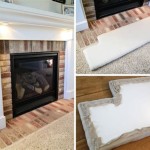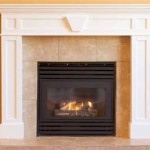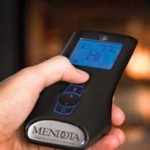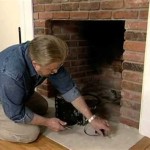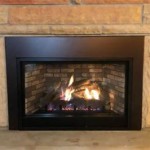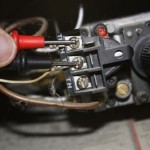Propane Gas Log Fireplace Inserts: A Comprehensive Overview
Propane gas log fireplace inserts offer a convenient and efficient alternative to traditional wood-burning fireplaces. Their popularity stems from their ease of use, minimal maintenance requirements, and consistent heat output. While providing the aesthetic appeal of a real fire, they eliminate the need for chopping wood, cleaning ashes, and dealing with creosote buildup. This article will provide a comprehensive exploration of propane gas log fireplace inserts, covering their various aspects, including types, benefits, installation considerations, safety precautions, and maintenance guidelines.
A propane gas log fireplace insert is essentially a self-contained heating appliance designed to fit within an existing masonry or factory-built fireplace. It utilizes propane gas as its fuel source to generate flames that mimic the appearance of a natural wood fire. These inserts typically consist of ceramic or refractory logs arranged over a burner system. The burner system is connected to a propane gas line, allowing for controlled ignition and flame height adjustment. The entire unit is enclosed within a metal firebox that provides safety and directs heat into the room.
These inserts are available in a wide array of styles and designs, catering to diverse aesthetic preferences. From rustic and traditional to modern and contemporary, there is a propane gas log fireplace insert to complement virtually any interior decor. Furthermore, various log types are available, replicating different wood species and arrangements to enhance the realism of the fire.
Understanding the Key Benefits of Propane Gas Log Fireplace Inserts
Propane gas log fireplace inserts offer a multitude of advantages that make them a compelling choice for homeowners seeking a convenient and efficient heating solution.
Convenience and Ease of Use: One of the primary benefits of propane gas log fireplace inserts is their unparalleled convenience. Unlike traditional wood-burning fireplaces, they require no manual labor for fuel procurement and preparation. With the simple flip of a switch or the press of a button, the fire ignites, providing instant warmth and ambiance. The flame height can be easily adjusted to control the heat output and visual appeal. Furthermore, there is no need to constantly tend to the fire, as the insert automatically maintains the desired flame level.
Consistent and Controllable Heat: Propane gas log fireplace inserts offer consistent and controllable heat output. Unlike wood-burning fireplaces, where the heat intensity fluctuates based on the type and amount of wood burned, gas inserts provide a steady and predictable heat source. This allows for precise temperature control, ensuring a comfortable and consistent room temperature. Many models also feature thermostatic controls that automatically adjust the flame height to maintain the desired temperature, further enhancing comfort and energy efficiency.
Reduced Maintenance and Cleaning: Propane gas log fireplace inserts significantly reduce the maintenance and cleaning associated with traditional fireplaces. There is no ash to remove, no creosote to worry about, and no need for chimney sweeping (although annual inspections are recommended). The logs themselves are designed to be durable and long-lasting, requiring minimal maintenance. The absence of smoke and debris also contributes to a cleaner and healthier indoor environment.
Enhanced Safety: Compared to wood-burning fireplaces, propane gas log fireplace inserts offer enhanced safety features. Many models are equipped with oxygen depletion sensors (ODS) that automatically shut off the gas supply if the oxygen level in the room drops to a dangerous level. This prevents carbon monoxide poisoning, a serious health risk associated with incomplete combustion. Furthermore, the enclosed firebox prevents sparks and embers from escaping, reducing the risk of fire hazards.
Environmental Friendliness: Propane gas is a relatively clean-burning fuel compared to wood. It produces fewer emissions and contributes less to air pollution. While propane is a fossil fuel, its combustion releases significantly less particulate matter and greenhouse gases than burning wood. This makes propane gas log fireplace inserts a more environmentally friendly option for home heating.
Installation Considerations for Propane Gas Log Fireplace Inserts
Proper installation is crucial for the safe and efficient operation of a propane gas log fireplace insert. It is highly recommended that installation be performed by a qualified and licensed technician to ensure compliance with local codes and regulations. Several factors need to be considered during the installation process.
Gas Line Connection: A propane gas line must be connected to the fireplace insert. The gas line should be installed by a qualified plumber or gas fitter, ensuring that it meets all applicable safety standards. The gas pressure must be properly regulated to ensure optimal performance of the insert. A shut-off valve should be installed in the gas line for easy maintenance and emergency shut-off.
Venting Requirements: Propane gas log fireplace inserts require proper venting to exhaust combustion byproducts safely outside the home. The venting system should be installed according to the manufacturer's instructions and local codes. The type of venting required will depend on the type of insert and the specific installation conditions. Some inserts require a direct vent system, while others can be vented using an existing chimney.
Clearance Requirements: Adequate clearance must be maintained between the fireplace insert and combustible materials, such as walls, mantels, and furniture. The manufacturer's instructions will specify the minimum clearance requirements for each model. Failure to adhere to these clearance requirements can create a fire hazard. Heat shields may be required to protect nearby combustible materials.
Electrical Connections: Some propane gas log fireplace inserts require electrical connections for features such as blowers, remote controls, and electronic ignition systems. These electrical connections should be made by a qualified electrician, ensuring compliance with all applicable electrical codes. A dedicated circuit may be required to provide adequate power to the insert.
Fireplace Preparation: Before installing a propane gas log fireplace insert, the existing fireplace should be thoroughly inspected and cleaned. Any debris, such as ash, soot, and creosote, should be removed. The chimney should be inspected for cracks or other damage and repaired as necessary. The damper should be either removed or permanently locked in the open position to ensure proper venting.
Safety Precautions and Maintenance of Propane Gas Log Fireplace Inserts
While propane gas log fireplace inserts are designed to be safe, it is essential to follow certain safety precautions to prevent accidents and ensure proper operation. Regular maintenance is also crucial for maintaining the performance and longevity of the insert.
Carbon Monoxide Detection: A carbon monoxide detector should be installed in the same room as the fireplace insert. Carbon monoxide is a colorless and odorless gas that can be deadly. The detector will provide an early warning in case of a carbon monoxide leak. The batteries in the detector should be replaced regularly.
Regular Inspections: The fireplace insert and venting system should be inspected annually by a qualified technician. The inspection should include checking for gas leaks, proper venting, and any signs of damage or deterioration. Any necessary repairs should be made promptly.
Proper Ventilation: Ensure proper ventilation in the room where the fireplace insert is installed. Avoid blocking air vents or sealing off the room completely. Adequate ventilation is essential for preventing carbon monoxide buildup and ensuring proper combustion.
Log Placement: The ceramic logs should be placed according to the manufacturer's instructions. Incorrect log placement can obstruct the burner and affect the flame pattern. It can also lead to incomplete combustion and the production of carbon monoxide. Never rearrange the logs while the fire is burning or when the insert is hot.
Cleaning: The fireplace insert should be cleaned regularly to remove dust and debris. Use a soft cloth or brush to clean the logs and the firebox. Never use abrasive cleaners or solvents, as they can damage the finish. The glass door (if present) should be cleaned with a glass cleaner specifically designed for fireplace inserts.
Professional Servicing: The burner system and gas connections should be serviced periodically by a qualified technician. This will ensure that the insert is operating safely and efficiently. The technician can also check for gas leaks and other potential problems.
In conclusion, propane gas log fireplace inserts offer a convenient, efficient, and aesthetically pleasing alternative to traditional wood-burning fireplaces. Their ease of use, consistent heat output, and minimal maintenance requirements make them a popular choice for homeowners. By understanding the various aspects of these inserts, including their benefits, installation considerations, safety precautions, and maintenance guidelines, homeowners can make informed decisions and enjoy the warmth and ambiance of a realistic fire without the hassles associated with wood-burning.

Propane Fireplace Inserts Gas Log Sets Tunkhannock Pa Ace Robbins

Bluegrass Living 34 In W 32000 Btu Black Vent Free Dual Burner Gas Fireplace Insert And Remote The Inserts Department At Com

How Do Gas Logs Work Hocon

Fireplace Insert Guide Fireplaces Direct Learning Center

Vented Fireplaces And Gas Logs Palmetto

Enviro E Series Gas Or Propane Insert Fireplace Fireplaces By Cameron

Gas Fireplace Insert Propane Regency Vermont Castings Napoleon

Propane Gas Fireplace Inserts Delivered Installed In Ct Works

Napoleon Gl24e Vented Gas Log Set 24 Inch

Gas Fireplace Inserts Pros And Cons Of Ventless Fireplaces
Related Posts

